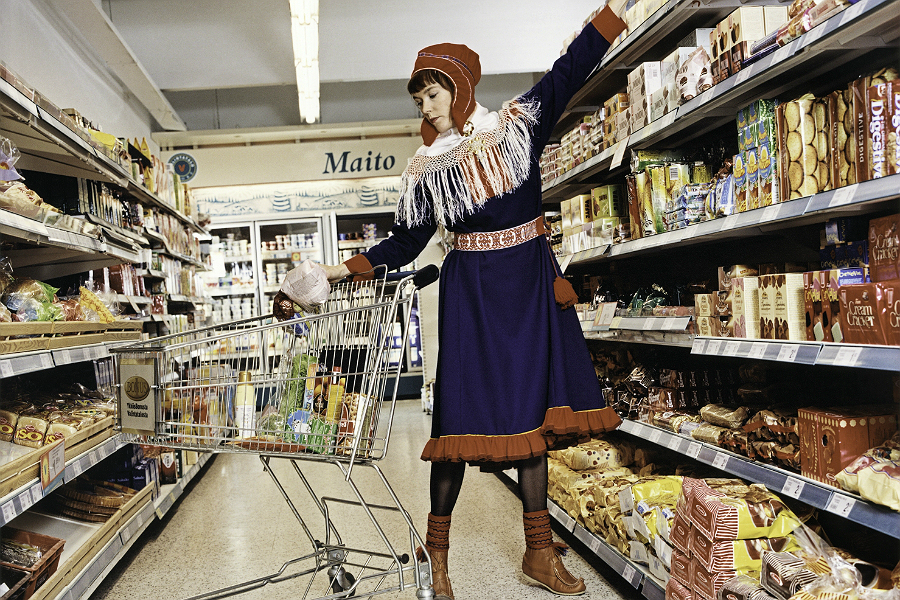Topophobia at the Bluecoat – Reviewed

Linda Pittwood gets that anxious feeling, but was it for all the right reasons?
A man stands by some trees with blood smeared down his face. He is looking away from you. You continue scanning across the landscape, trying to find clues to explain what has happened. The atmosphere is tense. A car lies on its side, smoke billowing from it as if it has been in a crash. There is no-one else around… To continue any further with this description would be a spoiler. To see the entirety of David Ferrando Giraut’s 13-minute film, Road Movie (Perpetuum Mobile), you will have to visit the new exhibition Topophobia at the Bluecoat. The theme is ‘anxiety around place’ and the exhibition showcases the artwork of 10 artists, including the work of its two curators, Anne Eggebert and Polly Gould.
Eggebert and Gould describe the works as sharing a common thread of “fearfulness, anxiety, unease, embarrassment, dislocation, alienation, nostalgia, loss, stage fright, urban dread, disturbing, or humorous incongruity, suspense and…thrill”. In addition, Eggebert says that the works reveal an emerging theme within contemporary art practice of “an anxious relation[ship] to the techniques and technologies of display.” This touring exhibition is the outcome of a long-term research-based curatorial partnership between the pair, who have been collaborating since 1999 and are both sometime tutors at Central St Martin’s College.
Sara-Jayne Parsons, curator at the Bluecoat, says that Giraut’s piece is the one that has stayed with her, having seen the exhibition in its inaugural venue, Danielle Arnaud, London. Road Movie is certainly powerful and masterful in creating a feeling of unease. The other pieces for the most part are about anxiety but do not necessarily make the viewer feel anxious; as Eggebert says, “art can offer our fears back to us to be enjoyed at a safe distance.” Giraut’s piece is not the only one that feels cinematic; Uta Kogelsberger’s photographs are straight out of an apocalyptic Hollywood movie, while at the same time they celebrate the beauty and grandeur of the urban landscape. Elsewhere Almut Rink questions the artifice of the built up environment, through now retro but once futuristic architectural software, planting rows upon rows of identical CGI trees.
Suspended above the crowd, held up by scaffolding, is a human-sized nest or tree-house out of which legs or arms swing in a deadpan fashion from time to time. Liverpool-based artist Emily Speed has been commissioned to produce this new work, Panoply. Speed’s practise explores the relationship between architecture and the human body but this is her first performance in a gallery. The architecture of the Bluecoat is a great location for Speed’s cheeky new piece as it seems like a continuation of the evolution of this venue, especially in light of its redevelopment for the 2008 Capital of Culture. Several of the pieces, including Speed’s, borrow from child-like activities; building dens, making collages or hand-drawing maps. As I walk around the exhibition I start to re-examine these formative experiences; were these innocent activities actually a way of coping with the scary world outside my front door?
Topophobia is well balanced in terms of media old and new. Sometimes one is used to explore the other. Eggebert produces hand-drawn maps from Google Earth images, contrasting them with real plants or closely observed botanical drawings. Contrasting the landscape with modern life is also the subject of Marja Helander’s crisp and intense photographic images (pictured). Helander is Finnish and here cleverly expresses the difficulty of reconciling her life as a business woman with her snowy surroundings, and the contrast of her native culture with the weekly supermarket shop – it’s a nice touch that through the window of this gallery is a Tesco Metro and you can watch people rushing busily past. Abigail Reynolds’ sculptural collages continue the trend of the hand-made and Louise K Wilson combines cinema and collage in her new video work, Everything begins and ends at exactly the right time and place (signal/noise cut).
Dr Caterina Albano says in her accompanying catalogue essay, that agoraphobia is a “fear of modernity.” This put me in mind of the film Goodbye Lenin, where a family try to keep their mother from discovering that capitalism has taken over East Germany – imposing on her an artificial agoraphobia. Agoraphobia is a crippling disorder, which prevents sufferers from leaving their homes and fully engaging in society. This exhibition makes me wonder whether cities full of advertising slogans and ugly or half-finished redevelopments are really the best backdrops to our lives. In Topophobia, the impact of the fluxuating German economy is the subject of Matthias Einhoff’s film, Brache Berlin. Einhoff uses the soundtrack and zooming camerawork of a promo video to introduce us to an area of Berlin that has been snapped up by property developers only to become a fenced-off wasteland. This video seems especially poignant in Liverpool in a week that a key UN figure described the Toxteth area as trapped in a “vicious cycle of social exclusion and drugs problems”.
A successful group show allows its audience to make connections and relationships between the work of the different artists, and Topophobia does that very well. The final leg of this tour is Spacex in Exeter. Each presentation has and will change according to the different architectural context. For an exhibition not conceived exclusively for the Bluecoat, it is very in-keeping with the venue’s programme of thought-provoking thematic shows. It seems to speak a lot about Liverpool and how the Bluecoat operates as an oasis in a city full of the peaks and troughs of new developments, history, partial-regeneration, fantastic architecture and terrible depravation. Food for thought.
Linda Pittwood
Topophobia at the Bluecoat, until Sun 22nd April





